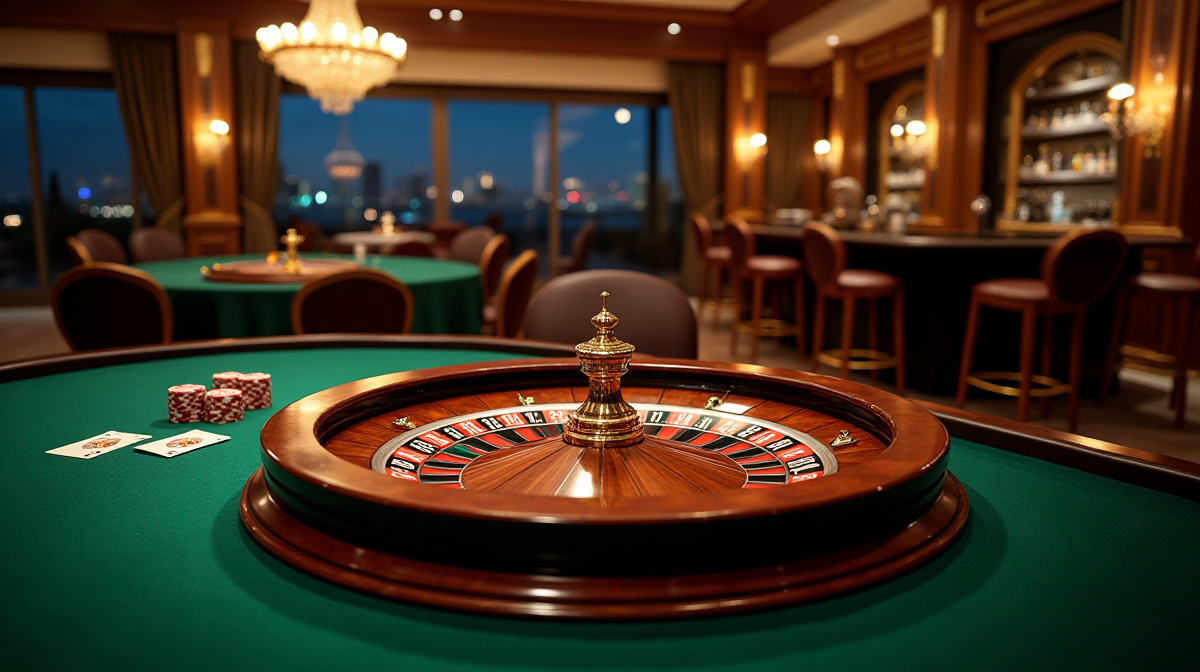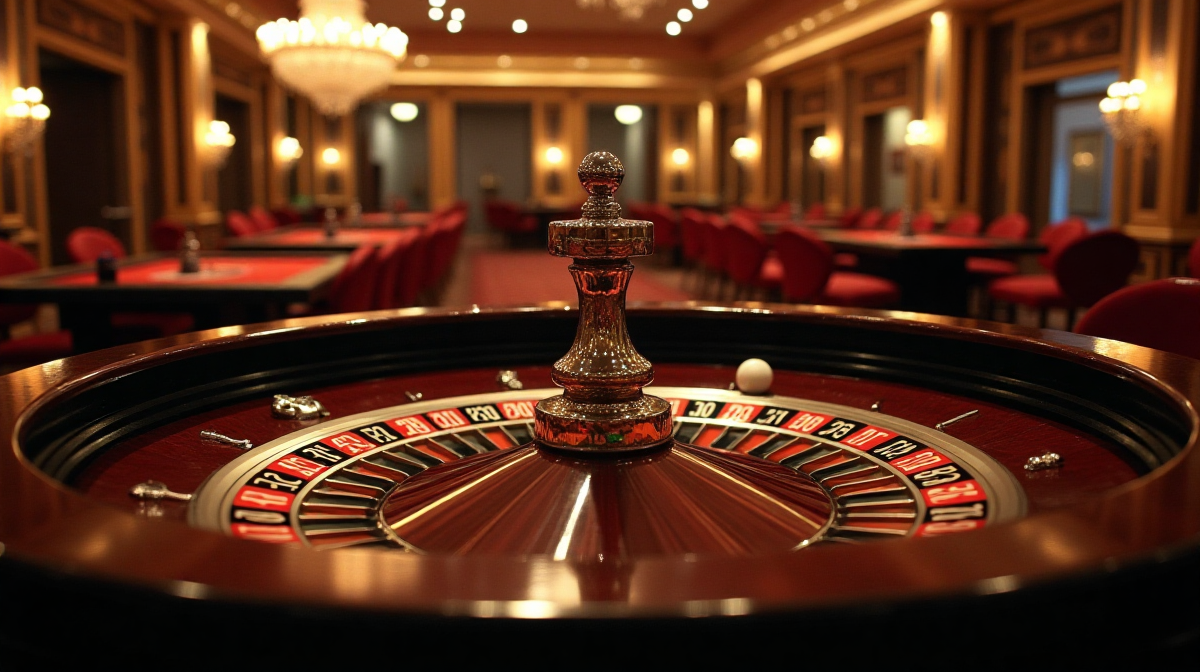Russian Roulette vs. Buckshot Roulette: Explained
Defining the Deadly Game: A Brief Overview
Russian roulette and buckshot roulette represent two of the most dangerous and tragically fascinating “games” imaginable. Both involve firearms and a deliberate risk of death, stemming from a perverse desire to test fate, demonstrate courage (a deeply flawed perception), or succumb to despair. These aren't games in any legitimate sense; they are acts of extreme self-harm or aggression, often linked to underlying mental health struggles. Understanding the mechanics and psychology behind them is crucial, not to sensationalize, but to prevent further tragedies. The allure, however misguided, sometimes intersects with online challenges and a dangerous search for validation, leading some to seek out information, even a sport sportingbet on the outcome, demonstrating the depths of despair.
Why the Fascination? Exploring the Psychology Behind These Risks
The enduring, albeit horrifying, fascination with these acts is complex. It taps into primal fears of mortality, a morbid curiosity about the limits of human endurance, and a distorted sense of control. For some, it’s a desperate attempt to feel something – any sensation – when overwhelmed by numbness or emotional pain. Others may be influenced by portrayals in media, mistakenly viewing it as a display of bravery or rebellion. The potential for a fleeting moment of perceived power over life and death can be intoxicating to individuals already struggling with feelings of helplessness. It's a dangerous echo chamber, and sometimes, tragically, individuals even attempt to create a sportingbet around these acts, seeking a perverse form of acknowledgement.
Disclaimer: Emphasizing the Extreme Danger and Illegality
Before proceeding, it is absolutely critical to state unequivocally: Russian and buckshot roulette are extraordinarily dangerous and illegal. Attempting either is a near-certain path to severe injury or death. This article is intended for informational purposes only, to explore the psychology and consequences of these acts, not to provide instructions or glorify them. If you or someone you know is struggling with suicidal thoughts or considering self-harm, please reach out for help (see resources at the end).
Russian Roulette: The Classic & Cruel Game
History and Origins: Tracing Back to its Roots
The origins of Russian roulette are murky and debated. Popular belief attributes its emergence to Russian military officers in the late 19th and early 20th centuries, particularly during conflicts where they faced unreliable firearms. The story goes that they would spin the cylinder of their revolver to clear a chamber, then play the game as a way to determine if they would live or die if captured by the enemy. Another theory places its origins within Russian prisons, where it was used as a desperate gamble for freedom or a means of settling disputes. Regardless of the precise origins, it quickly became a symbol of fatalistic risk-taking.
How it’s Played: A Step-by-Step Explanation
Revolver Selection & Preparation
Traditionally, Russian roulette involves a revolver – typically a six-chambered one. The participant manually loads a single bullet into one of the chambers, then spins the cylinder to randomize the bullet’s position.
The Procedure: Loading, Spinning, and Trigger Pulling
After spinning, the cylinder is closed, and the revolver is pointed at the participant’s head (or sometimes another person’s). The trigger is pulled. If the bullet is in the aligned chamber, the outcome is fatal. If not, the cylinder is spun again, and the process is repeated. This continues until the bullet is fired. Even discussing this highlights the horror. The desperation that leads someone to even consider this is immense, and often tied to the reckless pursuit of thrills, like a dangerous sportingbet.
Probabilities & Statistics: Understanding the Odds of Survival/Death
With a six-chamber revolver and one bullet, the probability of survival on the first pull is 5/6 (approximately 83.3%). However, with each subsequent spin and pull, the odds shift, and the risk of death increases. The odds are deceptively complex, but the outcome is always life-threatening.
Psychological Impact on Participants: Fear, Anxiety, and Desperation
The psychological toll on participants is immense. The anticipation of the trigger pull is agonizing, inducing extreme fear, anxiety, and a sense of utter helplessness. The game thrives on the manipulation of these emotions, offering a perverse sense of control in the face of inevitable danger. The drive to find a way to beat the odds, even to place a sportingbet to try and control the outcome, is a sign of deep psychological distress.
Notable Cases & Historical Examples
While numerous unconfirmed accounts exist, documented cases of Russian roulette often involve tragic outcomes, frequently linked to individuals struggling with depression, addiction, or trauma. These cases serve as stark reminders of the devastating consequences of this deadly “game.”
Buckshot Roulette: A More Recent, Equally Fatal Variation
Origins & Emergence: The Rise of Buckshot Roulette
Buckshot roulette is a more recent variation, gaining notoriety through social media challenges and online platforms. It emerged in the early 21st century, fueled by viral videos and a disturbing trend of risk-taking behavior. Unlike Russian roulette, it often involves a shotgun.
How it’s Played: Primary Methods Explained
Single Shell vs. Multiple Shells
The most common method involves loading a shotgun with a single shell, often a 12-gauge shell filled with buckshot, and spinning the cylinder (or, in the case of a pump-action shotgun, manually cycling the action). Variations include loading multiple shells, increasing the probability of injury.
The Impact of Shotgun Gauge & Distance
The gauge of the shotgun and the distance to the target (usually the participant’s head) influence the severity of the injury. A larger gauge shotgun and close proximity result in a wider spread of buckshot and more devastating damage.
Why it's Considered More Dangerous than Russian Roulette
Higher Probability of Immediate, Severe Injury
Buckshot roulette is considered significantly more dangerous than Russian roulette because of the nature of the weapon. Even if the shell doesn't contain a projectile directly aligned with a vital organ, the spread of buckshot can cause widespread tissue damage, blindness, and debilitating injuries. The element of chance is reduced; harm is almost guaranteed.
Less Reliance on Luck – More Guaranteed Harm
Unlike Russian roulette, where survival is possible on the first pull, buckshot roulette carries a higher probability of some form of injury, even if not immediately fatal.
The Role of Social Media & Challenges: Contagion Effect & Copycat Behavior
Social media platforms have played a significant role in the spread of buckshot roulette, with viral videos and challenges encouraging others to participate. This “contagion effect” can lead to copycat behavior, particularly among young people seeking attention or validation. This often ties into a perverse sense of bravado, and, disturbingly, some have even tried to create a sportingbet around the outcome.
Comparing Russian Roulette and Buckshot Roulette: A Head-to-Head Analysis
Probability of Death: Quantifying the Risks
While both are inherently deadly, buckshot roulette generally carries a higher probability of some form of serious injury, making the overall risk profile more dangerous. Russian roulette has a higher initial chance of survival (though still incredibly risky), but the odds rapidly decrease with each spin.
Type of Injury: Comparing the Nature & Severity of Wounds
Russian roulette typically results in a single gunshot wound if fatal. Buckshot roulette, however, often causes multiple, widespread injuries due to the spread of buckshot, leading to more complex and devastating trauma.
Psychological Factors: Differences in the Mental State Involved
Both games attract individuals struggling with extreme emotional distress. However, buckshot roulette, with its association with online challenges and social media, may be more prevalent among those seeking attention or validation through risky behavior.
Accessibility & Ease of Implementation: Which is easier to attempt?
Russian roulette, while still requiring access to a firearm, may be perceived as simpler in its mechanics. Buckshot roulette requires knowledge of shotgun operation and loading, potentially making it slightly less accessible to some.
The Glamorization Factor: How Each is Perceived
Russian roulette has a longer history and a more established (though still deeply disturbing) cultural narrative. Buckshot roulette, fueled by social media, may be perceived as more “shocking” and attention-grabbing, leading to a particularly dangerous form of glamorization.

The Legal Consequences
Legality of Possession of Firearms
Possessing firearms illegally is a crime in most jurisdictions. Participating in either Russian or buckshot roulette almost always involves illegal firearm possession.
Attempting Russian/Buckshot Roulette as Suicide or Assault Charges
Attempting either game can result in charges of attempted suicide, even if the individual survives. If another person is involved, it can be charged as assault with a deadly weapon or attempted murder.
Potential Charges Related to Encouraging/Filming the Acts
Encouraging someone to participate in either game, or filming and distributing videos of it, can lead to charges of aiding and abetting, incitement, or reckless endangerment.
The Legal Implications for Spectators/Aiders and Abettors
Spectators who knowingly assist or encourage the game can also face legal consequences, as they are considered complicit in the dangerous act.
Why These Games Exist & How to Respond to Individuals at Risk
Identifying Risk Factors & Warning Signs
Risk factors include a history of mental illness, substance abuse, trauma, social isolation, and exposure to violence. Warning signs include talking about death or suicide, expressing feelings of hopelessness, and engaging in reckless or self-destructive behavior.
Mental Health Issues: Depression, Suicidal Ideation, and Trauma
These games are often a manifestation of underlying mental health issues. Addressing these issues is crucial to preventing future tragedies.
How to Help Someone Considering These Actions: Resources and Support
If you suspect someone is considering Russian or buckshot roulette, reach out to them immediately. Encourage them to seek professional help and connect them with resources such as crisis hotlines, mental health professionals, and support groups. Don't dismiss their feelings or try to snap them out of it.
Debunking the Myth of Courage or Thrill-Seeking
It’s vital to challenge the misguided notion that these acts represent courage or thrill-seeking. They are desperate cries for help, born out of pain and despair. Even the attempt to create a sportingbet around this is a sign of extreme distress.
The Importance of Responsible Online Behavior & Reporting
Report any videos or challenges promoting Russian or buckshot roulette on social media platforms. Encourage responsible online behavior and discourage the sharing of harmful content.

Conclusion
Reinforcing the Danger and Fatal Consequences
Russian and buckshot roulette are not games; they are acts of profound self-destruction with devastating consequences. The risks are immense, and the outcome is almost always tragic.
A Plea for Mental Health Awareness and Support
We must prioritize mental health awareness and support, providing accessible resources for individuals struggling with emotional distress. Breaking the stigma surrounding mental illness is crucial to encouraging people to seek help.
Resources for Help and Crisis Intervention
- National Suicide Prevention Lifeline: 988
- Crisis Text Line: Text HOME to 741741
- The Trevor Project: 1-866-488-7386 (for LGBTQ youth)
- SAMHSA National Helpline: 1-800-662-HELP (4357)

